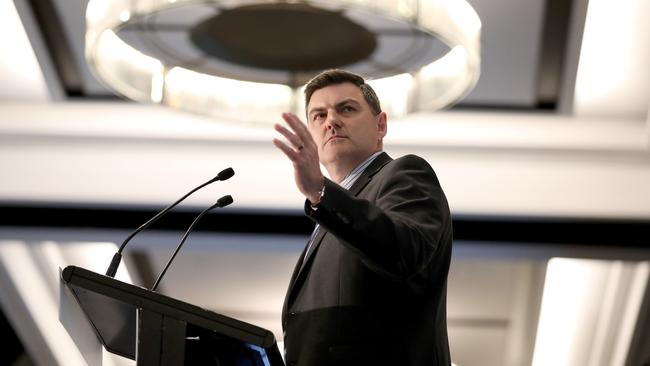Federal-state plan to keep the lights on in NSW
An upgrade of the Queensland-NSW Interconnector will be underwritten by Scott Morrison and Gladys Berejiklian.

An upgrade of the Queensland-NSW Interconnector will be underwritten by Scott Morrison and NSW Premier Gladys Berejiklian in a move to increase competition between generators in the electricity market and drive down wholesale energy prices amid pressure from coal station closures.
The federal and NSW governments will underwrite the project up to $102m to help TransGrid fast-track early works ahead of final approvals by the Australian Energy Regulator.
Ahead of the Liddell coal-fired power station closing in the Hunter Valley in 2023, the Prime Minister said unlocking transmission infrastructure was crucial in ensuring the future of the NSW energy grid. “This is about putting downward pressure on wholesale prices so businesses and households have access to reliable and affordable power,” he said.
“Industry needs certainty. They need to know their electricity won’t cut out, and their power bill won’t suddenly double.
“You can’t run a business like that, and you can’t employ people. That’s why we are underwriting this interconnector. It’s a practical step to make sure it happens, and it happens quickly.”
Support for the interconnector upgrade is separate to the Morrison government underwriting the new generation investments program, which has shortlisted 12 renewable pumped hydro, gas and coal upgrade projects in NSW, South Australia, Tasmania, Queensland and Victoria.
In mid-2018, the Australian Energy Market Operator released an integrated system plan outlining transmission investments required to preserve long-term affordability and reliability in the national electricity market.
The QNI project, which will provide an extra 190MW of transmission capacity from Queensland to NSW and an upgrade of the Victoria/NSW interconnector to provide an extra 170MW of transmission capacity, were identified as key priorities by the AEMO.
Upgraded interconnectors would increase wholesale market competition in NSW and push down prices. Upgrades would also provide a reliability buffer in NSW, delivering an extra 360MW of supply across the state during peak demand.
Ms Berejiklian said her government committed to the QNI upgrade to “ease cost of living pressures across NSW” and provide “reliable and affordable power to households and businesses”. “Last year, the NSW government announced its transmission infrastructure strategy, which outlined our commitment to accelerate the delivery of key interconnector projects, including the QNI,” Ms Berejiklian said.
The joint federal-state agreement, of which the commonwealth’s liability is capped to a maximum of $51m, will see upgrades to the QNI brought forward to late-2021 and help cushion the impact of the Liddell closure.
Regulatory approvals for the QNI project were progressing under the NSW transmission infrastructure strategy but further action would be required to ensure the upgraded QNI was “fully operational by the summer of 2022-23”.
Under the arrangement, the federal and state governments would be liable only for early work costs not yet approved by the AER.
TransGrid chief executive Paul Italiano said the underwriting commitment was essential to the “early delivery” of the transmission project: “TransGrid is building the interconnector to ensure a reliable supply of electricity to customers over the summers ahead and as older, coal-fired generators shut down.”
NSW Energy Minister Matt Kean said the project would help “keep the lights on and keep power costs down as the energy market transitions”, while federal Energy Minister Angus Taylor said NSW industries required lower energy prices and reliable transmission to protect jobs.

